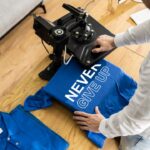
Dropshipping remains a viable way to make money online in 2025, but its profitability depends on strategic execution due to increased competition and evolving market dynamics. Below, I’ll outline its viability and provide a concise guide to approaching it for success.
Is Dropshipping Still Viable?
Pros:
- Low startup costs: No need to hold inventory or manage warehouses.
- Scalability: Easy to test products and scale with demand.
- Flexibility: Run from anywhere with internet access.
- E-commerce growth: Global e-commerce sales are projected to grow, with platforms like Shopify and TikTok Shop driving opportunities (web sources indicate e-commerce sales could reach $7 trillion by 2025).
Cons:
- High competition: Saturated markets in popular niches (e.g., fashion, electronics).
- Low margins: Typically 10-20% due to reliance on third-party suppliers.
- Challenges: Shipping delays, quality control issues, and reliance on suppliers can harm customer trust.
- Ad costs: Rising costs for paid ads on platforms like Facebook and TikTok (some sources report a 20-30% increase in ad spend since 2023).
Despite challenges, dropshipping can be profitable with niche selection, strong marketing, and excellent customer service. Recent posts on X highlight success stories, with some claiming $10,000-$50,000 monthly revenue, though these are outliers and require significant effort.
How to Approach Dropshipping for Success
Research and Choose a Niche
Focus on underserved or trending niches with low competition but sufficient demand. Use tools like Google Trends, Jungle Scout, or Helium 10 to identify products with growing interest (e.g., eco-friendly products, pet accessories, or health gadgets).
Avoid oversaturated niches like generic clothing or tech gadgets unless you can differentiate (e.g., custom designs).
Validate demand via social media (check X for trending products) or keyword research (aim for 1,000-10,000 monthly searches with low competition).
Select Reliable Suppliers
Use platforms like AliExpress, CJ Dropshipping, or Spocket for global suppliers, or source locally for faster shipping (e.g., Printful for print-on-demand).
Vet suppliers for quality, shipping times (aim for 5-10 days), and reliability. Order samples to test products.
Consider US/EU-based suppliers to reduce shipping times, as customers expect faster delivery (web sources note 60% of shoppers abandon carts over slow shipping).
Build a Professional Store
Use Shopify, WooCommerce, or TikTok Shop for easy setup. Shopify’s basic plan ($39/month) is beginner-friendly.
Optimize for user experience: fast loading, mobile-friendly, clear product descriptions, and high-quality images.
Add trust signals: customer reviews, secure payment options, and a clear return policy.
Market Effectively
Social Media Ads: Run targeted ads on TikTok, Instagram, or Facebook. TikTok’s algorithm favors creative, short-form videos (15-30 seconds). Budget $10-$50/day initially to test campaigns.
Influencer Marketing: Partner with micro-influencers (10k-50k followers) in your niche for cost-effective promotion (X posts suggest $100-$500 per post).
SEO and Content: Optimize product pages for search engines (e.g., “eco-friendly yoga mats”) and create blog content to drive organic traffic.
Email Marketing: Use tools like Klaviyo to build email lists and recover abandoned carts (can boost revenue by 10-15%, per web sources).
Focus on Customer Experience
Offer responsive support via email, chat, or social media to build trust.
Manage expectations with clear shipping timelines and transparent policies.
Use post-purchase upsells (e.g., complementary products) to increase average order value.
Analyze and Optimize
Track metrics like conversion rates (aim for 2-5%), cost-per-click, and customer acquisition cost using tools like Google Analytics or Shopify’s dashboard.
Test multiple products and ad creatives weekly to find winners. Scale successful campaigns and drop underperformers.
Reinvest profits into better suppliers, branding, or ads to stay competitive.
Key Tips for 2025
Leverage AI Tools: Use AI for product descriptions, ad copy, or customer support (e.g., ChatGPT or Jasper). I can help generate ideas or analyze trends if you provide specifics.
Tap Emerging Platforms: TikTok Shop and Instagram Reels are growing fast for dropshipping due to their visual appeal and engaged audiences.
Focus on Branding: Differentiate with unique branding or packaging to stand out in crowded markets.
Stay Compliant: Ensure compliance with local regulations (e.g., taxes, GDPR for EU customers) to avoid legal issues.
Expected Investment and Returns
Startup Costs: $500-$2,000 (domain, Shopify subscription, initial ad spend, samples).
Time Commitment: 10-20 hours/week initially for setup, research, and marketing.
Potential Revenue: Beginners can aim for $1,000-$5,000/month within 3-6 months with consistent effort. Top performers report $10,000+/month, but this requires scaled ads and optimized operations.
Final Notes
Dropshipping’s low barrier to entry makes it viable, but success hinges on niche selection, reliable suppliers, and effective marketing. Start small, test rigorously, and adapt based on data.


